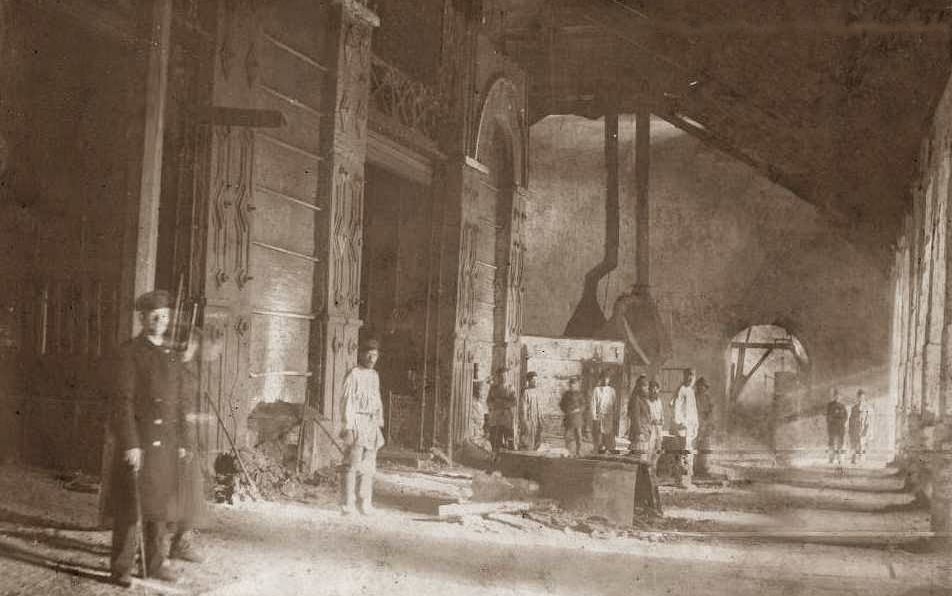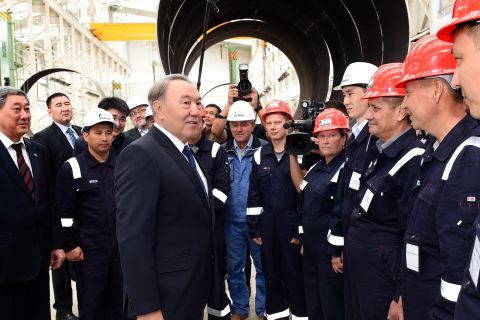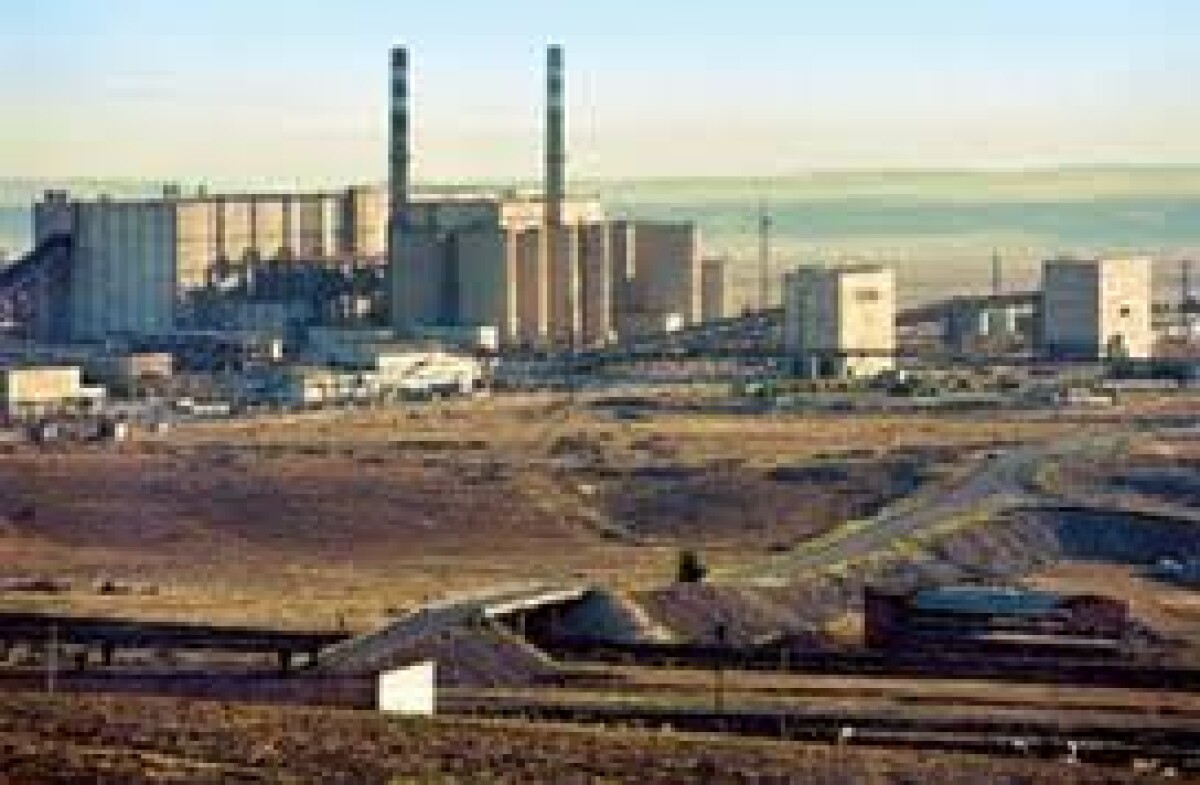
In our country, the second five-year plan of the SP FIID is taking place. But in the history of Kazakhstan there were stages in the development of industry. Let's remember them.
The first stage is connected with the pre-revolutionary period. With the accession of Kazakhstan to the Russian Empire, the tsarist government began construction of factories and plants in the Kazakh steppes. The mining industry and the processing of agricultural raw materials began to develop.
The largest deposits of coal are located in Central Kazakhstan. Its discoverer can be called Appak Baizhanov who discovered coal in 1833. Ore deposits in Irtysh area and Central Kazakhstan were discovered by Komys Pshenbayev. The first application for the discovery of the Ekibastuz coal deposit and the Maikaiyn complex ores was received from him. Among his discoveries are also Aleksandrovka ore deposits, coal in Taldykul, Zhamantuz, Karasor, Shoptikul and Maikuben. Russian businessmen, having discovered a "gold mine", bought the richest deposits for nothing. In the 40s of the XIX century, merchants N. Ushakov and A. Ryazanov bought the Karaganda coal deposit. Also they owned the Uspensky copper deposit, the districts of Zhezkazgan and the Spassky Voskresensky copper mine.
By the beginning of the 20th century, most of the mining enterprises were in the hands of foreigners. Due to predatory exploitation, mines and plants fell into decay.
In 1904, JSC "Spassky copper ore" was formed in London, which bought up deposits from Russian merchants. The shares belonged to the British, French, Americans, Germans, Swiss, Spaniards and others. In the same year, the deposits of Ridder and Zyryanovsk colored ores were purchased by the Austrians. The mines of Zhezkazgan were actively purchased by JSC "Atbasar Copper diggings". Salt was mined at the Baskunchak, Elton and Iletsk fields in Western Kazakhstan, as well as in the Koryakov fisheries, in the northeast of Kazakhstan. In 1909, about 4 million poods of salt were extracted in the Koryakov fisheries. At the Spassky Plant, a new technological process for the conversion of matte was introduced. For this purpose, two reflecting furnaces and two converters were built. As a result, better quality blister copper was obtained. In 1909, 510 workers worked at the Spassky Plant, 311 people worked at the Uspensky Mine, 152 people worked in the coal mines. In 1909, 886 thousand poods of ore and 2 million 76 thousand poods of coal were mined and 141 thousand poods of copper were smelted.
The next stage is connected with the Soviet industrialization. The economy of Kazakhstan suffered the devastating consequences of the first world and civil wars: oil production declined, copper ore mining stopped, many mines and coal mines were flooded or inactive. A railway transport was in a catastrophic state, there were not enough rails and sleepers.
A course toward socialist industrialization was planned at the Fourteenth Congress of the All-Union Communist Party (B) In December 1925. Restoration of the national economy and industry was protracted. Rapid development was given to the coal industry, 90% of its production in 1940 accounted for the share of the Karaganda basin. Kazakhstan achieved the third place in oil production. The chemical industry was developed: the Chimkent Chemical Plant was reconstructed, in 1939 the Aktyubinsk Chemical Combine was commissioned, Karaganda digital electrical prospecting station, Ulbinsk hydro-electric power station, the thermal power plant of the Balkhash copper smelter, the Chimkent lead plant, the Aktyubinsk Chemical Combine, the Achisay Complex Ores Combine, etc. were built. Electricity generation in the republic increased 486 times in comparison with 1913. In 1928-1940, the railway network of the republic increased by almost 50% and reached 6,581 km. The Turkestan-Siberian railway was built, which connected Siberia with Central Asia.
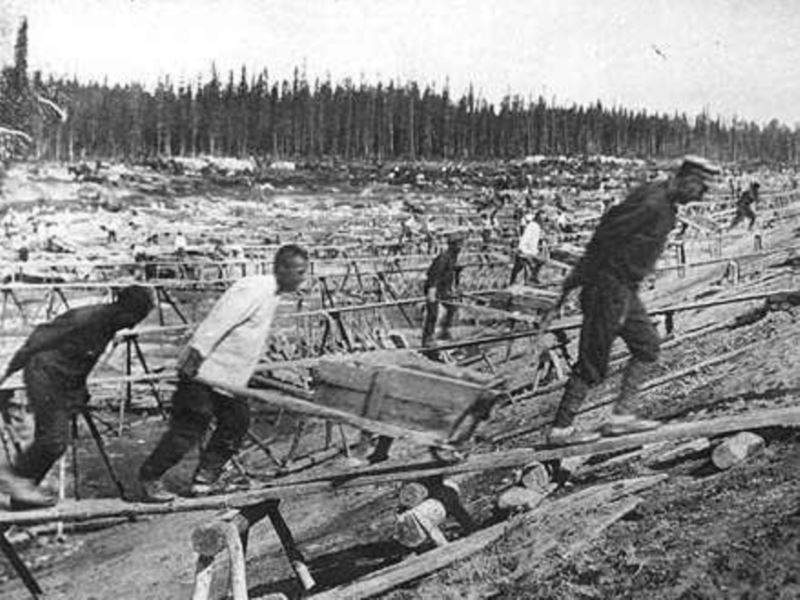
Industrial development in 1926-1940 led to the transformation of Kazakhstan into an industrial-agrarian republic, the proportion of townspeople in the population increased, and the engineering and technical intelligentsia was formed.
The third stage developed in the postwar period. The Kazakh SSR had by that time a powerful industrial base.
During the Great Patriotic War, the republic became the base for evacuated factories, plants and enterprises from the European part of Russia, Belarus and Ukraine. After the war, the republic began construction of heavy industry enterprises. New coal mines, the Karaton and Munaily fields, the Kazakh Metallurgical Plant came into service, the first stage of the Karatau Mining and Chemical Combine was put into operation.
But, to the detriment of the light and food industries, the industries producing raw materials and fuel advanced at a faster rate. 700 enterprises were put into operation, including: Ust-Kamenogorsk lead-zinc plant, Zhezkazgan concentrating factory, Ust-Kamenogorsk and the first stage of Bukhtarma hydroelectric power stations, Karaganda GRES-2 (regional hydro-electric power plant), Sokolov-Sarbay ore mining and processing enterprise. The first large coal mine at the Ekibastuz field was commissioned. In the 1960s in Kazakhstan it was extracted 32.3 million tons of coal against 17.3 million tons in 1950. Karaganda Metallurgical Combine became the largest enterprise of the USSR with a full metallurgical cycle. The combine produced special rolling profiles, high-quality steel and cast iron. The first stage of the Ermakov ferroalloy plant was put into operation.
The oil-extracting industry developed at an accelerated pace. Thanks to the commissioning of the Korsak, Tanatar and Prorva fields, the oil production level in 1965 was 3 million tons. The development of the industry in Mangyshlak enabled to increase oil production to 10 million tons in 1970. The coal industry has developed significantly. In 1959-1965 in the republic, the production capacity was increased by 19.5 million tons. In 1965, the volume of production in the Ekibastuz basin amounted to 14.3 million tons of coal. By 1970, in Karaganda and Ekibastuz basins, coal production reached 61 million tons per year, 41% of which was extracted in the most progressive, open way.
But in the development of capital construction there were a number of problems. This dominance of the administrative-command system of economic management, the disproportion between the large volume of capital construction and limited means for its implementation, construction developed on an extensive basis, the construction of facilities and enterprises exceeded the standards.
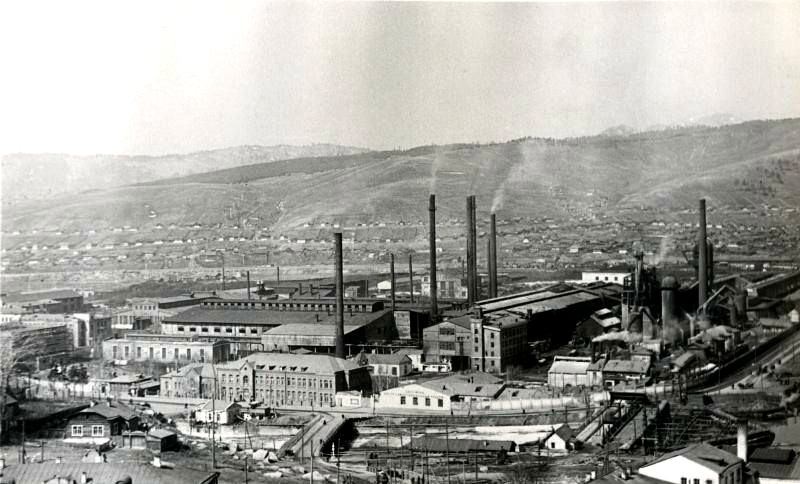
The fourth stage of industrialization is connected with the era of independence. With the attainment of independence, the young state faced numerous difficulties that required an early solution: the destruction of the vertical ties of the national economic complex, the stoppage of factories and plants, hyperinflation, unemployment. In 1990-1994, the volume of industrial production in Kazakhstan fell by half, and in the agrarian sector the decline was one third. Transport traffic fell by two thirds.
The country began privatization of industrial facilities. Important was the corporatization of individual projects. Almaty tobacco factory and Shymkent confectionary factory became the first enterprises sold under individual projects. Of particular importance for the state and society was the privatization of large enterprises of special economic and social importance. In the mid-1990s, for further privatization, Kazakhstan began to attract foreign capital and joint ventures with the participation of foreign capital were established. Initially, foreign investors sold only certain large enterprises. This was caused by the need to withdraw the enterprises of the republic from the critical state. Particularly difficult situation was at the largest enterprises of metallurgy. The Karaganda Metallurgical Plant was experiencing serious problems, huge debts for electricity, transportation and was on the verge of bankruptcy. Therefore, it was purchased by the Indian company Mittal Steel, which paid $ 350 million for the company's debts, and the total investment for eight years from the moment of privatization amounted to almost $ 1 billion. In the shortest time, blast furnaces, coke oven batteries were repaired, major technological lines were reconstructed.
On the verge of bankruptcy in 1995 was Zhezkazgan non-ferrous metals, having $170 million of debt, including $10 million on wages. In 1996, Samsung Corporation bought shares of this company, rehabilitated, and invested hundreds of millions of dollars of investment. In the fall of 1996 in the Pavlodar region the coal supply system was actually destroyed. In these conditions, the property complexes of coal mines Bogatyr and Vostochny were privatized by the Eurasian industrial group. In the financial rehabilitation and rehabilitation of enterprises the Eurasian Group invested $ 290 million, and more than $ 900 million was invested in the development of production over the past years. A significant part of the shares of the Ust-Kamenogorsk lead-zinc, Leninogorsk (Ridder) base metals and Zyryanovsk ore mining and processing enterprises at the first stage of privatization was transferred to the labor collective. But the problems of production at the enterprises remained unresolved; there were no financial sources for investing production. After attracting the investor of the Swiss firm Glinkor, a restructuring was carried out. On the basis of the merger of Ust-Kamenogorsk lead-zinc, Leninogorsk base metals and Zyryanovsk ore mining and processing enterprises, the company KazZinc was established.
Based on the messages of the President of the Republic of Kazakhstan in May 2003, the Strategy for Industrial and Innovative Development of the Republic of Kazakhstan was developed and approved. The main instruments for the implementation of the Strategy for Industrial and Innovative Development were state development institutions: JSC Development Bank of Kazakhstan (medium and long-term loans with low interest rates in priority sectors of the economy); JSC Investment Fund of Kazakhstan (equity participation without obtaining control in the authorized capital of enterprises); JSC National Innovation Fund (financial support of innovative business); JSC State Insurance Corporation for Insurance of Export Credits and Investments (insurance of enterprises operating in the sphere of non-primary exports).
From 2003 to 2006 they financed 116 projects in the sphere of infrastructure and manufacturing industry for $ 2.136 billion. At the same time, 37 objects worth $800 million were commissioned. Among the projects implemented within the framework of the Strategy, one can note the launch in December 2007 of the Kazakhstan electrolysis plant in the city of Pavlodar, as well as a factory for the production of seamless pipes.
In Ust-Kamenogorsk, the car assembly plant for the production of Skoda cars was launched, the production of Kamaz trucks in Kokshetau was organized, the first full-cycle DAEWOO BUS KAZAKHSTAN car assembly plant was opened in Semey, the project to create domestic off-road vehicles brand SsangYong, deployed at the production facilities of JSC AgromashHolding in Kostanay - a joint venture of JSC AgromashHolding, a group of automobile companies AllurAuto and South Korean automaker SsangYong Motor Company, in Talgar district of Almaty region, near the international airport of Almaty, opened a plant to assemble trucks and buses Hyundai.
The global economic crisis of 2007 set the task of finding new approaches to strengthening the world economy through enhancing the industrial potential of Kazakhstan. March 19, 2010 by the Decree of the President of the Republic of Kazakhstan No. 958 the State program of forced industrial and innovative development of the Republic of Kazakhstan for 2010-2014 was approved. Since 2010, the republic has taken a course towards forced industrial and innovative development. Industrial projects first of all began to be realized in such priority sectors as agro-industrial complex, construction industry, oil refining, metallurgy, chemical industry and pharmaceuticals, energy, transport and telecommunications infrastructure. The economic effect of such development is equal to half the country's GDP - about $ 50 billion.
Under the State Program of Industrial and Innovative Development and the Industrialization Map of the country, 162 projects totaling 6.5 trillion tenge were realized in the beginning of 2010, with 200 thousand jobs created. The five-year development plan of the country is aimed at creating a broad layer of wealthy citizens in a prosperous democratic country with a diversified economy.
The program Business Roadmap 2020, aimed at stimulating national entrepreneurship and business activity in the post-crisis development phase, is of great importance. The program is aimed at implementing tasks in three areas: supporting new business initiatives, improving the business sector, supporting export-oriented industries. All directions are aimed at ensuring sustainable and balanced growth of regional entrepreneurship in non-primary sectors of the economy, maintaining existing ones and creating new permanent jobs. In 2011, real GDP growth amounted to 7.5%, retail trade turnover increased by 12.5%, real growth of public spending was 11%, while real growth of household expenses - 10.96%.
A feature of the next decade for Kazakhstan was a five-year plan for the forced industrial and innovative development in 2010-2014. The State Program for the Forced Industrial and Innovative Development of the Republic of Kazakhstan for 2010-2014 (SP FIID) and the Industrialization Map have taken the course to ensure sustainable and balanced economic growth through diversification and increased competitiveness.
In 2011, about $ 2 billion of foreign investments were additionally attracted to the non-primary sector of the economy of the republic, which enabled the commissioning of dozens of industrial program objects, infrastructure and joint ventures. The complex index of the effectiveness of the SP FIID is labor productivity. In this direction, the Business Roadmap 2020 program aims to stimulate national entrepreneurship and business activity in the post-crisis development phase.
By the end of 2013, the Industrialization Map, taking into account the actualization, included 872 projects worth more than 11.5 trillion tenge, creating more than 228,000 jobs for the construction period and 192,000 jobs for the period of operation. Industrial projects, first of all, were implemented in such priority sectors as agro-industrial complex, construction industry, oil refining, metallurgy, chemical industry and pharmaceuticals, energy, transport and telecommunications infrastructure.
For the first time in Kazakhstan, the production of electrical modules has been created, and a new branch has appeared - transport engineering. Within the framework of the First Five-Year Plan, automobile and aircraft construction, the production of diesel locomotives, passenger and freight cars were created. Since the beginning of the implementation of the state program FIID has significantly increased the extractive industry. Since 2008, the production of oil and gas processing equipment has increased by 5.1 times, oil production by 3.2, agricultural machinery by 2 times. Labor productivity for 4 years increased by 1.4 times: from $ 38 thousand to $ 50 thousand per employee. In the framework of the 1st stage of the SP FIID, 800 enterprises were launched in April 2014, 700 billion tenge was allocated, and 150 thousand people were provided with work. Thanks to the implementation of the program, which has no analogues in the post-Soviet space, during the crisis it was possible to preserve not only jobs but also create new ones. The mistakes made during the implementation of the First Five-Year Plan (1st stage) of the SP FIID correct the second phase plans, the principles of financing.
Thus, the implementation of the second phase of the program will allow in 2019 to achieve a growth in output of manufacturing products by 43% to the level of 2012; growth of gross added value in the manufacturing industry by at least 1.4 times; growth of labor productivity in the manufacturing industry by 1.4 times in real terms; growth in the value of non-raw (processed) exports by at least 1.1 times; reduce the energy intensity of manufacturing by at least 15%; growth in employment in the manufacturing industry by 29.2 thousand people.
There is every reason to hope that the second stage of the SP FIID will be able to avoid the problems of the first stage.
Translated by Raushan MAKHMETZHANOVA
